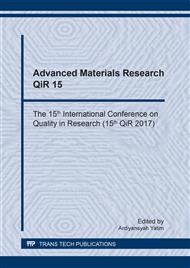p.10
p.18
p.27
p.33
p.42
p.50
p.56
p.63
p.70
Enhancement of Mechanical Properties of Cast Beta-Type Titanium Alloy by Aging Treatment
Abstract:
Beta type Ti-29Nb-13Ta-4.6Zr alloy (TNTZ) is one of the titanium alloys which have gained much attention in dental applications. Dental precision casting is predominant for fabricating dental prostheses. However, there is a possibility for the mechanical properties of its casting to be degraded because of a α case, shrinkages and pores and a dendrite structure. One of the ways to enhance their mechanical properties is heat treatment process. Therefore, the aim of this study is to investigate the effect of aging treatment on mechanical properties and microstructure of TNTZ cast into magnesia based mold in order to improve its mechanical properties. As results, the Vickers hardness of the cast TNTZ after solution treatment is larger than that of the wrought TNTZ. The aging curve of the cast and the wrought TNTZ at an aging temperature of 673 K and 723 K exhibit almost similar pattern. For each aging time, the higher the aging temperature, the smaller the Vickers hardness for both alloys. Microstructures of cast TNTZ at various aging conditions consist of a dendritic structure and the average diameters of their grain size are around 40 μm. The diffraction peaks of precipitation of α and β phase s are detected in under aging (UA), peak aging (PA) and over aging (OA) conditions for both aging temperatures. However, the diffraction peak of ω phase is observed only in OA condition for cast TNTZ at aging temperature of 673 K. The highest tensile strength of the cast TNTZ and the wrought TNTZ at both aging temperatures are in PA condition and the elongation decrease continuously by increasing aging time. The tensile strengths of cast TNTZ in UA, PA and OA conditions at an aging temperature of 723 K are lower and their elongations are higher in comparison with those of 673 K. The high oxygen content seems to contribute to the poor elongation. SEM fractographs of the cast TNTZ at aging temperatures of 673 and 723 K in UA, PA and OA conditions show the brittle morphology with intergranular fracture that increases with increasing of aging time.
Info:
Periodical:
Pages:
42-49
Citation:
Online since:
August 2018
Authors:
Keywords:
Price:
Сopyright:
© 2018 Trans Tech Publications Ltd. All Rights Reserved
Share:
Citation:


